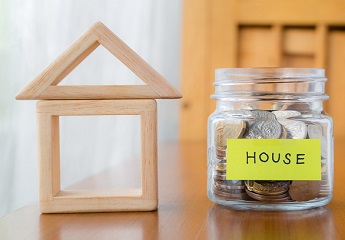Successive interest rate rises, surging inflation, low consumer sentiment and deteriorating affordability drove a shift in Australia’s 2022 housing market performance, CoreLogic’s annual Best of the Best report reveals.
The seminal publication, which sums up the country’s annual property performance and provides an outlook for the year ahead, shows the diversity in market conditions across geographies, value segments and property types.
When summing up the year that was, CoreLogic Head of Research Eliza Owen highlighted two distinct characteristics of capital growth trends in 2022, with the first being that not all housing markets were uniformly impacted by market headwinds.
“More expensive markets tended to see sharper declines, while the more affordable segment of the market where buyers typically do not have to extend themselves as much to buy into, saw greater resilience to increases in interest rates,” she said.
“The second trend is the pace of decline has been slowing on a broad basis since September. While this may be seen as a positive by some, there is still risk of the decline re-accelerating in the year ahead.”
CoreLogic Economist, Kaytlin Ezzy, added a prominent theme was the Australian property market’s seismic shift in conditions in the space of 12 months.
“Last year's Best of the Best celebrated some of the strongest annual sales turnover and value growth on record. This year's report examines some of the most resilient markets as we move through one of Australia's fastest interest rate tightening cycles in history,” Ms Ezzy said.
Over the year to November, national housing values fell -3.2%, driven by an annual decline in capital city dwelling values of -5.2%, while regional dwelling values rose by 3.3% over the same period.
The estimated total value of residential real estate decreased from $9.6 trillion in December 2021 to $9.4 trillion in November 2022. Estimated annual sales declined -13.3% compared to the year to November 2021, with approximately 535,000 homes sold nationally.
Ms Ezzy noted across the capital cities, suburbs in Sydney's City and Inner South, Northern beaches and Eastern suburbs regions dominated 2022's list for largest house and unit value declines.
“Houses in Narrabeen, Surry Hills, and Redfern recorded the most significant falls in value over the year, down more than -25%, while unit values in Centennial Park and Mona Vale fell by -23.1% and -20.8% respectively.
“At the other end of the scale, Adelaide suburbs dominated the list for strongest annual appreciation in value across both property types, with house values across Davoren Park rising by 34.7%, and unit values in Seacliff Park 41.4% above the levels recorded this time last year.
“Adelaide's resilience has been a consistent feature of the housing market in 2022. While down -0.9% from the July peak, dwelling values across the city are still 13.4% above the level recorded this time last year. Adelaide's relative affordability and persistently low advertised stock levels have helped insulate it from the worst impacts of rising interest rates,” Ms Ezzy said.
Top and bottom regional performers
Despite being more resilient to current market conditions, regional values have not been immune to the current downturn.
Although a number of regional suburbs recorded exceptional annual growth, including house values in the New England NSW township of Bingara (36.2%) and unit values at Laguna Quays on Queensland’s Coral Coast (30.9%), the majority of regional SA4 markets have moved past their cyclical peak, and are now recording declining values.
Suburbs across NSW's Richmond – Tweed region, which were impacted by both rising interest rates and damaging flood events, dominated the list for largest annual house value declines, while decreasing unit values across QLD's Townsville also featured heavily.
Popular lifestyle markets such as the Southern Highlands and Shoalhaven, and the Illawarra, south of Sydney as well as south east Queensland’s Sunshine and Gold Coasts recorded some of the strongest peak-to-trough declines in value.
Ms Ezzy said despite the declines, it is unlikely these markets will fall below the levels recorded at the beginning of COVID, given that dwellings across these regions are on average still 38% higher than where they were at the onset of COVID-19.
Market Outlook – 2023 crystal ball
One of the distinctive features of capital growth in 2022 was a slowdown in the pace of decline toward the end of the year. National value falls eased to -1.0% in November, following the steep monthly falls of -1.6% in August.
Ms Owen said although declines have been slowing, suggesting we may have moved past the peak home value declines, further rate rises are anticipated in the early months of 2023, which could cause the rate of decline to pick up speed once more.
“As we move into 2023, there continues to be a mix of headwinds and tailwinds for housing market performance,” she said.
“With expectations that the bulk of the rate tightening cycle occurred in 2022, housing value declines could find a floor in the new year. However, the extent of the floor in values could be further weighed down by mortgage serviceability risks, particularly for those rolling out of record-low fixed mortgage rates through the second half of year.
“But unemployment levels remain at historic lows, which plays a role in serviceability, helping to keep a lid on mortgage arrears. On top of that, strong rental markets and improving affordability from the point of falling values, may entice investors and first home buyers into the market, underpinning a recovery in buyer activity in the second half of 2023, when the cash rate stabilises.”
*12 months to 30 November, 2022
*This post was originally published on https://www.corelogic.com.au/news-research/news/2022/from-records-to-resilience-a-year-in-property-unlike-any-other?utm_medium=email&utm_source=newsletter&utm_campaign=au-res-best-of-best-2022-dec




